Safety and substitute teachers
By Mary Bigelow
Posted on 2014-05-29
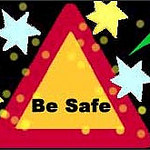 We had an incident in a high school physical science class where the substitute teacher left the room and several students engaged in dangerous behaviors with gas jets and flames. Fortunately, no one was injured and no damage occurred. I’m gathering suggestions on how to deal with this and prevent this in the future.
We had an incident in a high school physical science class where the substitute teacher left the room and several students engaged in dangerous behaviors with gas jets and flames. Fortunately, no one was injured and no damage occurred. I’m gathering suggestions on how to deal with this and prevent this in the future.
–Paula from Florida
First of all, you, the administrators, the substitute teacher, and the other students in the class at the time can be grateful that no injuries or damages occurred.
Experienced substitute or guest teachers in the sciences are hard to find, and good ones are an asset to the school and deserve our respect and appreciation. They make it possible for teachers to attend professional development programs or stay home when they are sick. Unfortunately, some students try to take advantage of substitutes, and once in a while, we hear of situations such as this one.
Several issues should be addressed:
- The students need to be held accountable for their behavior. It sounds like they waited until the teacher left the room (more on that later), moved out of their seats to a lab table, produced a flame with matches or a lighter, and turned on the gas. This would be a deliberate and serious violation of the class safety contract, far beyond a student accidently breaking a beaker or having to be reminded to wear goggles. The school administration should be the ones to impose consequences for this dangerous behavior, which may also have violated school policies.
- I’d be concerned why the guest teacher left the students unsupervised. I’m not sure what a good reason would be, but I’d ask for an explanation. Perhaps he or she was unaware of the potential dangers in a science lab? In any case, I would not want this person in my classroom again.
- This incident points out the need for having and using shut-off valves for utilities, especially gas, in lab classrooms. The gas should be turned off at all times when not being used for a planned, supervised lab investigation.
The incident is an opportunity to revisit your class safety contract. Does it specify that these rules apply when a another teacher, or no teacher, is in the room? Have a discussion with your students about appropriate behavior when another teacher is in the classroom. Establishing routines can be helpful so students know your expectations and can stay on task.
Ask your administrators to meet with the science department to become more familiar with the intensive level of supervision needed in a science lab to insure that students do not engage in unsafe behavior or vandalize the facility. The liability issue alone should get their attention. Occasionally in my school if substitute teachers were not available, the principal asked other teachers to cover classes during their planning time. If these teachers had to travel from another part of the building, it meant that students were unsupervised for a few minutes at the beginning of the class period, enough time for trouble. Frankly, if no substitute teacher is available, it might be better for the science classes to meet elsewhere.
Ask another teacher to keep an eye on your classroom and be a resource for your guest teacher (and make sure the gas is turned off and the storage areas are secure). If the substitute did not follow your plans or allowed students to behave in unacceptable or unsafe ways, you have the responsibility to share this information with your principal.
Safety should be a primary concern and you should not depend on a guest teacher to know all of the hazards of your labs. Even if you’re positive the teacher is credentialed in science and is familiar with laboratory routines and safety rules, don’t ask him or her to do a lab investigation with the potential for student injury, such as those requiring chemicals, live specimens, flames, projectiles, or heat sources.
See these archived Ms Mentor columns for related issues, including Plans for Substitutes and Getting Started as a Sub.
 We had an incident in a high school physical science class where the substitute teacher left the room and several students engaged in dangerous behaviors with gas jets and flames. Fortunately, no one was injured and no damage occurred. I’m gathering suggestions on how to deal with this and prevent this in the future.
We had an incident in a high school physical science class where the substitute teacher left the room and several students engaged in dangerous behaviors with gas jets and flames. Fortunately, no one was injured and no damage occurred. I’m gathering suggestions on how to deal with this and prevent this in the future.
–Paula from Florida
High School Blog
The "green" classroom
By Mary Bigelow
Posted on 2014-05-28
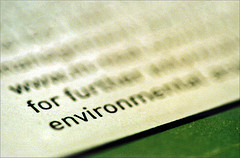 Each issue of The Science Teacher, NSTA’s high school journal, features the column The Green Room, with background information, classroom activities, and resources to make your teaching more environmentally friendly. Amanda Beckrich is the author of these articles. She is an environmental science teacher and the International Baccalaureate (IB) Diploma Program Coordinator at Christ Church Episcopal School in Greenville, South Carolina.
Each issue of The Science Teacher, NSTA’s high school journal, features the column The Green Room, with background information, classroom activities, and resources to make your teaching more environmentally friendly. Amanda Beckrich is the author of these articles. She is an environmental science teacher and the International Baccalaureate (IB) Diploma Program Coordinator at Christ Church Episcopal School in Greenville, South Carolina.
If you subscribe to a different print journal, you still can access these articles online, to read them and add them to your Learning Center Library. Here is a recap of topics this school year:
- Pests and Pesticides. The article discusses the environmental, economic, and societal impacts of pesticides and the role of synthetic chemicals in agriculture.
- The Gray Wolf, A Good Case Study. Use the gray wolf as a case study for such topics as endangered species, wildlife conservation methods, ecosystem restoration, general population dynamics, and predator-prey interactions.
- Get Grounded in Groundwater. Extend lessons in the water cycle by exploring issues related to groundwater.
- Back to Ecological Basics, Part 1. How does energy flow through an ecosystem?
- Back to Ecological Basics, Part 2. The cycling of key elements/molecules—water, carbon, nitrogen, phosphorous—among an ecosystem’s biotic and abiotic components is crucial to its functioning.
- Why Care About Wetlands? Nesting grounds, flood control, waste water treatment, habitats…the list of reasons goes on.
- Good Ozone, Bad Ozone. Compare and contrast stratospheric (“good”) and tropospheric (“bad”) ozone.
- Underlying Causes of Environmental Problems. Most environmental problems can be traced to human population growth and consumption patterns.
Photo: https://www.flickr.com/photos/smif/473670116
 Each issue of The Science Teacher, NSTA’s high school journal, features the column The Green Room, with background information, classroom activities, and resources to make your teaching more environmentally friendly.
Each issue of The Science Teacher, NSTA’s high school journal, features the column The Green Room, with background information, classroom activities, and resources to make your teaching more environmentally friendly.
Way Cool! Physics Lessons (Seriously)
By Carole Hayward
Posted on 2014-05-27
 Middle and high school science teachers who seek engaging chances for their students to first watch something happen—and then become curious enough to explore and discover why—should check out two new books by authors Matthew Bobrowsky, Mikko Korhonen, and Jukka Kohtamäki. This trio has teamed up to write two experiment-rich books that offer students the opportunity to observe natural phenomena and then build scientific models and theories based on their observations.
Middle and high school science teachers who seek engaging chances for their students to first watch something happen—and then become curious enough to explore and discover why—should check out two new books by authors Matthew Bobrowsky, Mikko Korhonen, and Jukka Kohtamäki. This trio has teamed up to write two experiment-rich books that offer students the opportunity to observe natural phenomena and then build scientific models and theories based on their observations.
According to the authors, these two books, Using Physical Science Gadgets and Gizmos (Grades 6-8) and Using Physics Gadgets and Gizmos (Grades 9-12), take an “approach to learning that is based on curiosity and creativity—a fun way to learn!”
Phenomenon-based learning (PBL) forms the pedagogical foundation for each of these books and is described as building learning on observations of real-world phenomena. Students conduct group exercises as well as draw group conclusions with the teacher serving as a guide and resource. (Another way to think of PBL is like a scientific puzzle: Each concept and phenomenon are pieces that ultimately fit together and develop a picture, which portrays the real situation.)
In offering 35 attention-grabbing experiences (such as a water rocket, fire syringe, a mirage, and energy balls) in Using Physical Science Gadgets and Gizmos, students will be able to:
- Think about problems from different angles and attempt different strategies;
- Demonstrate process skills, working logically and consistently;
- Collaborate with other students to solve problems;
- Use the language of physical science (and science in general);
- Reflect on the thinking process that helped them to acquire new knowledge and skills in physical science; and (maybe most importantly!)
- View physical science as interesting and fun.
In Using Physics Gadgets and Gizmos, the authors acknowledge that in science, there are many phenomena that are difficult at first to understand. The majority of physics books start with theory and then outline demonstrations and applications to follow. The reverse is true in this book. Rather than simple fact memorization, students will be doing real science using any number of the 54 experiments outlined in these books, which take them through pressure and force, laws of thermodynamics, energy, visible light and colors, resonance, buoyancy, two-dimension motion, angular momentum, magnetism, and electromagnetic induction.
The PBL approach to physics allows students to engage in collaboration, communication, and critical thinking, which support the goals of the Next Generation Science Standards. At the end of each chapter the authors provide a list of relevant standards from the NGSS to reinforce their focus on core ideas and practices of science vs. just the scientific facts.
If you’re looking to help your students grasp the “big picture” around physical science and/or physics, and you’ve already experimented with inquiry-, problem- or project-based learning, then the PBL approach to teaching and learning may be a natural next step for you.
Albert Einstein said it best: “The most beautiful thing that we can experience is the mysterious. It is the source of all true art and science.”
These books are also available as e-books: Using Physical Science Gadgets and Gizmos (Grades 6-8) and Using Physics Gadgets and Gizmos (Grades 9-12).
National Science Teachers Association and NAEYC Join Forces to Enrich Early Childhood Science
By Juliana Texley
Posted on 2014-05-25
The world of a young child is full of “wow.” Children are constantly observing, exploring and discovering phenomena around them. From those activities they build models of how they think the world works and make predictions from those models. That’s the essence of science, although we seldom use that term for what we see our children do every day.
Early this year a select committee of early childhood experts and the National Science Teachers Association (NSTA) Board and Council came together to formulate a position statement emphasizing the vital importance of science learning in the preschool years. They reaffirmed a progression of experiences and skills that begins during ages 3 through 5 and its place in the overall mission of the association. And just last month the board of the National Association for the Education of Young Children (NAEYC) joined us by endorsing that statement. By sharing our perspectives and increasing the lines of communication between the associations, we begin an important collaboration.
Here are some key points from NSTA’s position statement, Early Childhood Science Education:
- Young children have the capacity for constructing conceptual learning and the ability to use the practices of reasoning and inquiry (NRC 2007, 2012). In previous decades, many educators underestimated the capacity of young children to reason in the context of their physical experiences (structured play.) Today’s best practice calls for increased attention in this area.
- Experiences can best contribute to science learning when an adult prepares the environment for science exploration, focuses children’s observations, and provides time to talk about what was done and seen (NAEYC 2013, p. 18). Key words here are “time” and “talk.” The NGSS practice of scientific argumentation begins at the earliest level. But first we listen.
- Children need to have opportunities to engage in science learning in informal settings, such as at home with cooking activities and outdoor play or in the community exploring and observing the environment. Communicating with parents and other mentors is essential. They always want to support school experiences, but benefit when their educational partners help them see how best to bridge the home-school connection.
- Young children need opportunities for sustained engagement with materials and conversations that focus on the same set of ideas over weeks, months, and years (NRC 2007, p. 3) A science experience isn’t like a flu shot; one experience doesn’t create lasting ideas. The progressions of experiences and investigations that occur again and again are key to building understanding and models that work.
- The range of experiences gives them the basis for seeing patterns, forming theories, considering alternate explanations, and building their knowledge.. Multiple and varied experiences keep science constantly exciting. Physical, life and Earth sciences are all part of the 3-dimensional learning described by the Frameworks for K–12 Science Education.
An endorsement by our partners at NAEYC is, of course, exciting. But that vote is just the beginning. We will be working both within the association and with all early childhood educators to increase our understanding of and resources for this important level.
NSTA has already begun to expand its publications at the early childhood level. Editor Linda Froschauer has introduced many more articles for this level in Science and Children, and a column by Peggy Ashcroft continues to support teachers there. Resources like Page Keeley’s Uncovering Student Ideas in Primary Science (NSTA, 2013) help teachers increase their sensitivity to preconceptions and address them with the sorts of progressive experiences needed at this age. Workshops are planned all year and further publications will follow. The association has also partnered with both NAEYC and the International Reading Association as exhibitors and participants in their conferences, with cordial invitations to come to us as well.
But there is a lot more to be done. It is true all too often that the educators of older students misunderstand or underestimate the vital importance of high quality early childhood science education. Here’s an example I encountered in a conversation not too long ago: I was discussing a measurement activity for kindergarten students with a secondary teacher, who asked: “Did you use metric or English units?” I responded that it didn’t matter if these explorers used feet, giant steps or anything else that was handy because both Common Core and best practice emphasize that at this stage the important thing is to teach that things can be measured. My colleague really didn’t agree, but our conversation was rich and perceptive. In the months to come NSTA won’t just be developing professional development for early childhood educators but for all levels about these topics.
Another area where we need much more work is in the evaluation of trade books for young children and the way this evaluation can drive the market. NSTA has worked with the Children’s Book Council for 44 years to develop selection criteria and use them to identify the best literature at every level. But the choices for early childhood remain limited. In all those years there have only been a handful of books on physical science for preschool use. The books that appear on the media’s “best seller” lists often don’t meet these criteria. This year we join with the International Reading Association and Science Books & Films to offer a “Celebration of Literacy” in Richmond, Virginia October 18. Hopefully, with our new partnerships things will change.
It’s exciting to be part of these new endeavors. Although much of my career was spent at the secondary level, I returned to school after two decades to gain accreditation for early childhood–an eye-opening experience. (I often told my secondary colleagues that I must have been teaching “developmental 9th grade” all along!) I recommend that everyone who cares about scientific literacy take the time to “begin at the beginning” and take the time to see the world through the eyes of young children. Ask “why”…and then “why not.”
(We’ve started a special forum on the topic of Early Childhood Science Education in the Learning Center. Come join us there to extend the conversation.)
The world of a young child is full of “wow.” Children are constantly observing, exploring and discovering phenomena around them. From those activities they build models of how they think the world works and make predictions from those models. That’s the essence of science, although we seldom use that term for what we see our children do every day.
Learning by thinking
By Mary Bigelow
Posted on 2014-05-22
At a professional development workshop several years ago, I heard a teacher say “I do lots of activities. My students are so busy, they don’t have time to think!” Her statement has haunted me to this day. I wondered what students learned by following someone else’s busy, fast-paced agenda of activities. It sounded exhausting, for both the teacher and the students.
Another time, I visited a classroom in a school that had 90-minute class periods. The teacher presented a series of activities, changing topics about every 15 minutes–lecture, worksheet, small group discussion, writing, hands-on activities, pop quizzes—but there was no segue between activities and no common theme or unifying concept. These students were also “busy,” but I wondered what they were actually learning from this series of disconnected events.
Fast forward to this week, when I read the article You Really Can ‘Work Smarter, Not Harder’ describing a study on the value of reflection. (Note: the primary source working paper Learning by Thinking: How Reflection Aids Performance from the Harvard Business School is available as a PDF file. According to the abstract of the study:
Research on learning has primarily focused on the role of doing (experience) in fostering progress over time. In this paper, we propose that one of the critical components of learning is reflection, or the intentional attempt to synthesize, abstract, and articulate the key lessons taught by experience. Drawing on dual-process theory, we focus on the reflective dimension of the learning process and propose that learning can be augmented by deliberately focusing on thinking about what one has been doing. We test the resulting dual-process learning model experimentally, using a mixed-method design that combines two laboratory experiments with a field experiment conducted in a large business process outsourcing company in India. We find a performance differential when comparing learning-by-doing alone to learning-by-doing coupled with reflection. Further, we hypothesize and find that the effect of reflection on learning is mediated by greater perceived self-efficacy. Together, our results shed light on the role of reflection as a powerful mechanism behind learning.
As with any study, there are problems generalizing the results to other populations, subject areas, and learning tasks. But it seems that doing hands-on activities or investigations is only part of the learning process; giving students time to process and think about what they are learning pays off.
Reflection doesn’t necessarily mean students staring into space (although that’s what I do when I’m thinking). Reflection involves articulating or summarizing what was learned, making personal connections to previous learning, and formulating questions for future learning. Science teachers often use notebooking, sketching, exit activities, or dictating into a smartphone or app for these reflections. For those teachers who already have students use reflective processes, it’s nice to have validations from more formal studies.
I suspect that most of our students need some examples and modeling of reflective thinking, along with a rationale as to why it is important to learning. This could be an interesting action research project for the classroom!
At a professional development workshop several years ago, I heard a teacher say “I do lots of activities. My students are so busy, they don’t have time to think!” Her statement has haunted me to this day. I wondered what students learned by following someone else’s busy, fast-paced agenda of activities. It sounded exhausting, for both the teacher and the students.
NSTA Press Titles Honored: 2014 Washington Book Publishers Design and Effectiveness Awards
By Lauren Jonas, NSTA Assistant Executive Director
Posted on 2014-05-19
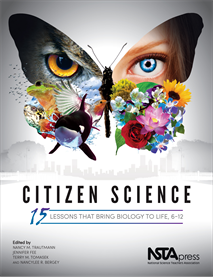 Authors and designers of books by the National Science Teachers Association (NSTA) Press cover the content science teachers need, so it’s no wonder that the outsides of the books are as impressive as the insides. We are pleased to announce that four NSTA book covers have received honors from the 2014 Washington Book Publishers Design and Effectiveness Awards. Congratulations to the following authors and designers!
Authors and designers of books by the National Science Teachers Association (NSTA) Press cover the content science teachers need, so it’s no wonder that the outsides of the books are as impressive as the insides. We are pleased to announce that four NSTA book covers have received honors from the 2014 Washington Book Publishers Design and Effectiveness Awards. Congratulations to the following authors and designers!
Citizen Science: 15 Lessons That Bring Biology to Life, 6-12
Edited by Nancy Trautmann, Jennifer Fee, Terry M. Tomasek, and NancyLee R. Bergey
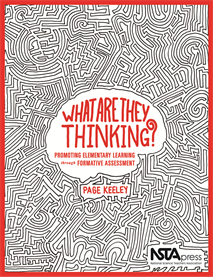 Cover designed by Joe Butera
Cover designed by Joe Butera
What Are They Thinking? Promoting Elementary Learning Through Formative Assessment
By Page Keeley
Cover designed by Rashad Muhammad
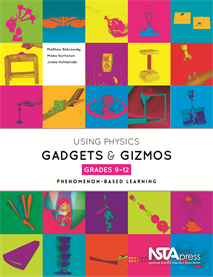 Using Physics Gadgets and Gizmos, Grades 9-12: Phenomenon-Based Learning
Using Physics Gadgets and Gizmos, Grades 9-12: Phenomenon-Based Learning
By Matthew Bobrowsky, Mikko Korhonen, and Jukka Kohtamäki
Cover designed by Joe Butera
Science for the Next Generation: Preparing for the New Standards
Edited by William Banko, Marshall L. Grant, Michael E. Jabot, Alan J. McCormack, and Thomas O’Brien
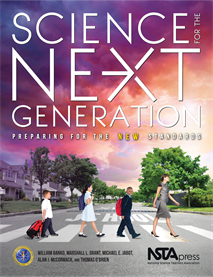 Cover designed by Joe Butera
Cover designed by Joe Butera
More About NSTA Press
Early childhood science education gets a boost up from NAEYC’s endorsement of the NSTA position statement
By Peggy Ashbrook
Posted on 2014-05-18
The National Association for the Education of Young Children (NAEYC) has endorsed the National Science Teachers Association’s (NSTA) new position statement on Early Childhood Science Education. Thank you to all the individuals who brought these two professional organizations together to promote excellence in teaching science in early childhood! To get a deeper understanding of how the position statement can benefit your teaching, listen to the Lab Out Loud! podcast interview with early childhood educator and researcher Karen Worth, and read Cindy Hoisington’s column in the online Young Children, “On Our Minds: Promoting Teaching About Science in the Early Years.”

The column begins with a peek into the thoughts of a preschool teacher and goes on to describe the development of the NSTA position statement. Hoisington writes, “The statement also incorporates an appreciation for the unique developmental characteristics and needs of young children. The statement emphasizes that children need frequent and varied opportunities to engage in exploration and discovery and that they develop an understanding of concepts through experiential learning that occurs over long periods of time and in home, classroom, and community settings. At the same time, the statement invites teachers to reflect on how they might extend the science activities they currently do to include more opportunities for exploration and discovery.”
Join the NAEYC’S Early Childhood Science Interest Forum (ECSIF), communicate with others on the ECSIF Facebook page and read more on the ECSIF blog.
To participate (or lurk) in another early childhood science education online community, register for the NSTA Learning Center and read/post/reply to the posts on the Early Childhood public forum. Helpful comments share resources and questions. For a supportive early childhood science education community, join NSTA and sign up for the early childhood email listserv at http://www.nsta.org/membership/listserver.aspx
Since I’m urging you to share your practice with other early childhood teachers, it’s only fair that I do the same. In the past month I’ve worked with teachers and children to examine and make observations of the common dandelion plants; make observations of leaf shapes; helped children plant seeds and watched pharmacists explain how drinking a liquid with pills will help the pills dissolve (USA Festival of Science & Engineering); and worked with second-graders as they designed, built and tested moving objects on ramp structures. Very satisfying work!
The National Association for the Education of Young Children (NAEYC) has endorsed the National Science Teachers Association’s (NSTA) new position statement on Early Childhood Science Education. Thank you to all the individuals who brought these two professional organizations together to promote excellence in teaching science in early childhood!
Exploring the properties of liquid, and solid, water
By Peggy Ashbrook
Posted on 2014-05-15
Exploring ice is an activity that children find interesting all year round. I remember the thin sheets of ice that would form in winter at what was usually the surface of a puddle in the gravel driveway in my childhood. The ice would cover the top, but when we stepped on it, there was no water under it! Since there wasn’t any water left in the puddle, how did that sheet of ice form, suspended above the non-existent water? Old and young experience that sense of wonder while observing natural phenomena. Journey through Dartmoor in the United Kingdom with blogger and artist Em Parkinson who also marveled at ice formations in depressions in the peat, and along the river.
Young children experience that sense of wonder when handling a block of ice that has an object embedded in it. How did that object get into the ice? They may be very familiar with the frozen water as ice cubes, icy sidewalks or icicles, but don’t really know the conditions in which water freezes to ice. Experiences observing changes in water as the temperature changes build children’s understanding of the properties of water and the reversible changes of freezing and melting. The Next Generation Science Standards puts this understanding in the Grade 2 performance expectation, 2-PS1 Matter and Its Interactions.
 In the April 2013 issue of Science and Children, I wrote about observing my own teaching while having children handle ice shapes with small objects frozen into them. The three and four-year-old children shared their ideas about how the objects got into the ice. The explanations were simple, “It fell in,” and, “First they put the ice in, then the object, then more ice!” Only one child confidently related how liquid water becomes solid into ice in a freezer. The children’s responses informed my teaching. We needed more experience with observing water,
In the April 2013 issue of Science and Children, I wrote about observing my own teaching while having children handle ice shapes with small objects frozen into them. The three and four-year-old children shared their ideas about how the objects got into the ice. The explanations were simple, “It fell in,” and, “First they put the ice in, then the object, then more ice!” Only one child confidently related how liquid water becomes solid into ice in a freezer. The children’s responses informed my teaching. We needed more experience with observing water,  and ice, as they got warmer or colder, as their properties changed. Luckily we were doing this in January and February when below freezing outdoor temperatures provided a full immersion experience with cold! Indoors the children made their own ice shapes with an object inside by putting plastic buttons into a cup of water and freezing them. Unexpectedly, some plastic buttons floated and some sank in the water.
and ice, as they got warmer or colder, as their properties changed. Luckily we were doing this in January and February when below freezing outdoor temperatures provided a full immersion experience with cold! Indoors the children made their own ice shapes with an object inside by putting plastic buttons into a cup of water and freezing them. Unexpectedly, some plastic buttons floated and some sank in the water.There are very practical reasons for understanding that water becomes ice when the temperature is cold enough. New drivers coming home at night after a freezing rain laid ice on the roads, bicyclists who deal with morning ice on otherwise perfect-cycling-weather days, and those of us who put beers in the freezer to speed up their chilling process, need to be aware of the phenomena. For children it is more about eating the delightfully cold popsicle now rather than later when it is a disappointing lukewarm sweet drink, or putting the ice cube tray back in the freezer after getting some for your drink.
 Now that the weather is warmer, children are exploring water in its liquid form: “washing” a fence, spraying water on chalk drawings to mix the colors, emptying the rain gauge, and watering the garden. Indoors, bathtime is an excellent time to begin exploring science concepts with young children. Read Sarah Erdman’s post in the National Association for the Education of Young Children’s online For Families, in which she shows us how to appreciate the small moments and make the most of every possible time to investigate the properties of that lovely material, water.
Now that the weather is warmer, children are exploring water in its liquid form: “washing” a fence, spraying water on chalk drawings to mix the colors, emptying the rain gauge, and watering the garden. Indoors, bathtime is an excellent time to begin exploring science concepts with young children. Read Sarah Erdman’s post in the National Association for the Education of Young Children’s online For Families, in which she shows us how to appreciate the small moments and make the most of every possible time to investigate the properties of that lovely material, water.
Outstanding Science Trade Books Enhance a 95-Year-Old Tradition
By David Beacom, NSTA Publisher
Posted on 2014-05-14
 This is Children’s Book Week—and 2014 is, incredibly, the 95th year for the annual celebration. A bit more recently—in 1954, a mere 60 years ago, Sister Marian taught her entire first-grade class of 66 students how to read. I should know—I was one of that good woman’s lucky pupils. By the way, the sheer size of that single classroom (Sister Madeline’s first grade across the hall was even bigger, with 70 kids) certainly illustrates the term “Baby Boom” better than any other example I could possibly cite.
This is Children’s Book Week—and 2014 is, incredibly, the 95th year for the annual celebration. A bit more recently—in 1954, a mere 60 years ago, Sister Marian taught her entire first-grade class of 66 students how to read. I should know—I was one of that good woman’s lucky pupils. By the way, the sheer size of that single classroom (Sister Madeline’s first grade across the hall was even bigger, with 70 kids) certainly illustrates the term “Baby Boom” better than any other example I could possibly cite.
Anyway, since Sister Marian got me launched on a lifelong exploration into the realm of books in particular and the world of words in general (Hey, some of my favorite reading in the ’50s ran to the backs of cereal boxes or magazine ads for “X-ray Goggles” that I ordered by mail and waited for for weeks), countless children’s books have been written and illustrated to lure generations of children into embarking upon the very same journey.
In celebration of this special week, the Huffington Post created an honor roll of the 50 best kids books published in the last 25 years. In addition, the New York Times Book Review devoted several pages of its recent issue to 26 of the best new books for kids.
Both resources are rich in stories—fictional adventures touchingly told and illustrated with almost magical artistry.
But, over time, I’ve become a bit of a science guy (Amateur Division)—working for decades at the National Geographic Society, then for the past dozen years or so as the publisher at the National Science Teachers Association (NSTA). So I look at these resources from that perspective, and they both come up… a little short. The Huff Post list includes, at best, a half-dozen nonfiction titles of any sort, with little focus on the honest, true-facts wonders of the world we actually live in. The special Times section on kids’ books does better on the nonfiction side—their half-dozen includes a history, a couple biographies, and three charming works that take young readers step-by-step through the annual cycle of seasons. Well-done.
But hardly enough, especially with the heavy emphasis on nonfiction reading in classrooms today. Which is why I took keypad in hand today to write my first-ever blog post.
Because I need to tell you that, since 1973, NSTA has worked with the Children’s Book Council (anchor sponsor of Children’s Book Week) to identify an annual list of Outstanding Science Trade Books for children. For my more-knowledgeable colleagues at NSTA, this is a yearly (and impressively well-informed) labor of love. We gather some of the best volunteers in the field of science education, people who’ve been in the trenches and know what they’re talking about, to review hundreds and hundreds of books each year. Then, every fall, they come together in our offices to whittle their final selections down to just a few dozen of the best of the best.
Of course: They look for accurate, informative, and engaging science content. Even more important: They only award top honors to books that will truly help encourage kids to love reading. Precisely what Sister Marian (and Sister Madeline, for that matter) set out to accomplish decades ago.
Just yesterday, New York Times columnist Frank Bruni wrote touchingly of the importance he placed on instilling a love of reading in his young nieces and nephews (Read, Kids, Read). But he also went beyond emotion to the realm of research, citing “a recent article in The Guardian by Dan Hurley, who wrote that after ‘three years interviewing psychologists and neuroscientists around the world,’ he’d concluded that ‘reading and intelligence have a relationship so close as to be symbiotic.’”
In my case, that’s no doubt an over-statement. But for the young people in your life, it’s comfortably close to incontrovertible fact. So, please, to help them along their path, check out our latest list of Outstanding Science Trade Books. You—and all the dedicated teachers of today—will be glad you did.
 This is Children’s Book Week—and 2014 is, incredibly, the 95th year for the annual celebration. A bit more recently—in 1954, a mere 60 years ago, Sister Marian taught her entire first-grade class of 66 students how to read. I should know—I was one of that good woman’s lucky pupils.
This is Children’s Book Week—and 2014 is, incredibly, the 95th year for the annual celebration. A bit more recently—in 1954, a mere 60 years ago, Sister Marian taught her entire first-grade class of 66 students how to read. I should know—I was one of that good woman’s lucky pupils.
Science and Children Wins a Silver Award for Design Excellence
By Lauren Jonas, NSTA Assistant Executive Director
Posted on 2014-05-13
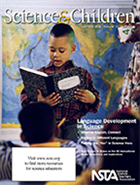 NSTA offers congratulations and gratitude to the authors, designers, reviewers, and editors of Science and Children, NSTA’s elementary level science education journal. Science and Children recently received the Silver EXCEL Award for design excellence in the journals category from Association Media & Publishing (AM&P). This year’s awards competition received more than 900 entries across numerous publications categories. The awards event will be held in May at AM&P’s Annual Meeting—we’ll bring you updates then! Learn more about this awards program at the AM&P website. Want to see what the buzz is all about? Browse the journal online to read articles, view online extras, and access the archives.
NSTA offers congratulations and gratitude to the authors, designers, reviewers, and editors of Science and Children, NSTA’s elementary level science education journal. Science and Children recently received the Silver EXCEL Award for design excellence in the journals category from Association Media & Publishing (AM&P). This year’s awards competition received more than 900 entries across numerous publications categories. The awards event will be held in May at AM&P’s Annual Meeting—we’ll bring you updates then! Learn more about this awards program at the AM&P website. Want to see what the buzz is all about? Browse the journal online to read articles, view online extras, and access the archives.
 NSTA offers congratulations and gratitude to the authors, designers, reviewers, and editors of Science and Children, NSTA’s elementary level science education journal.
NSTA offers congratulations and gratitude to the authors, designers, reviewers, and editors of Science and Children, NSTA’s elementary level science education journal.



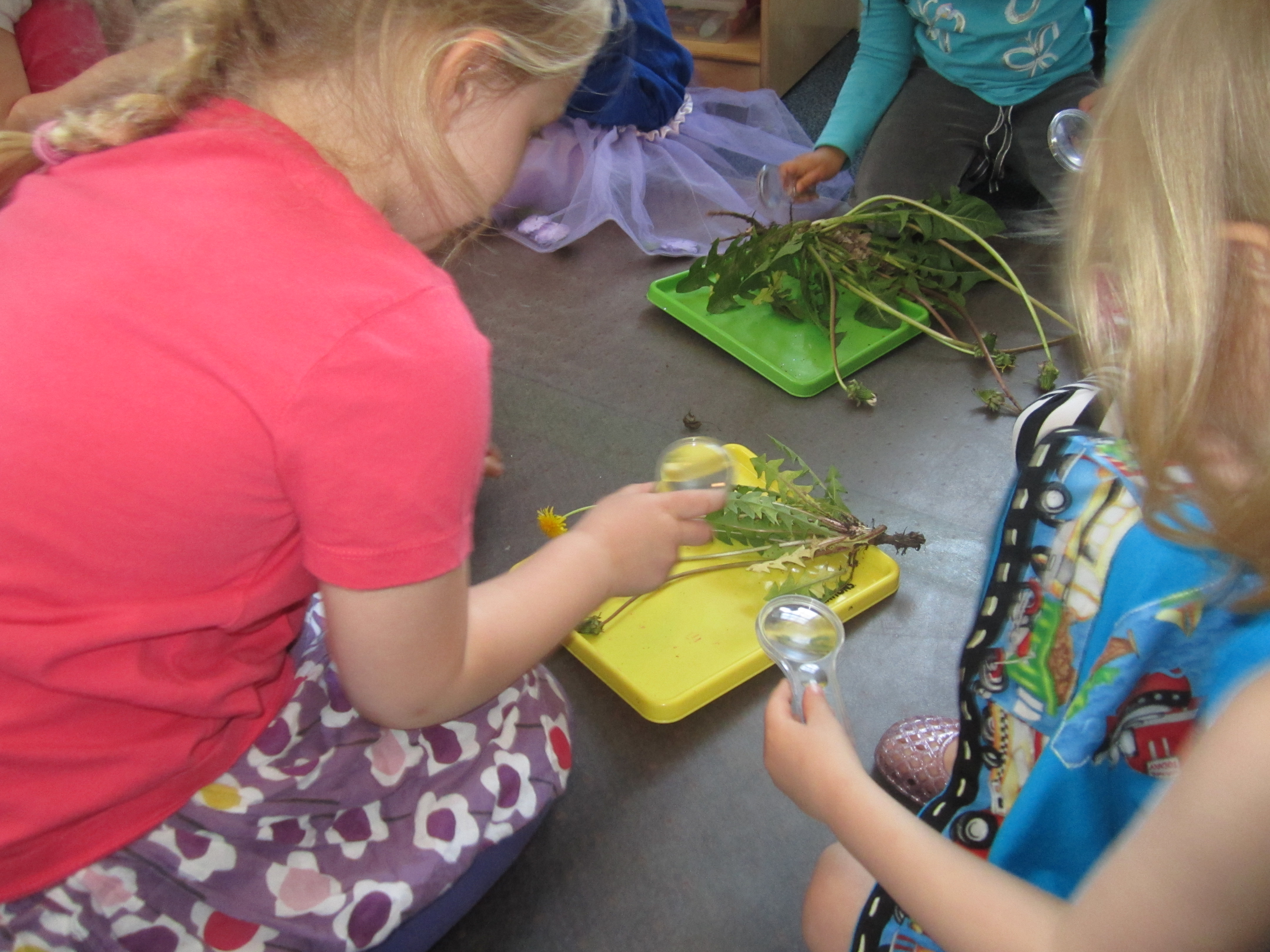
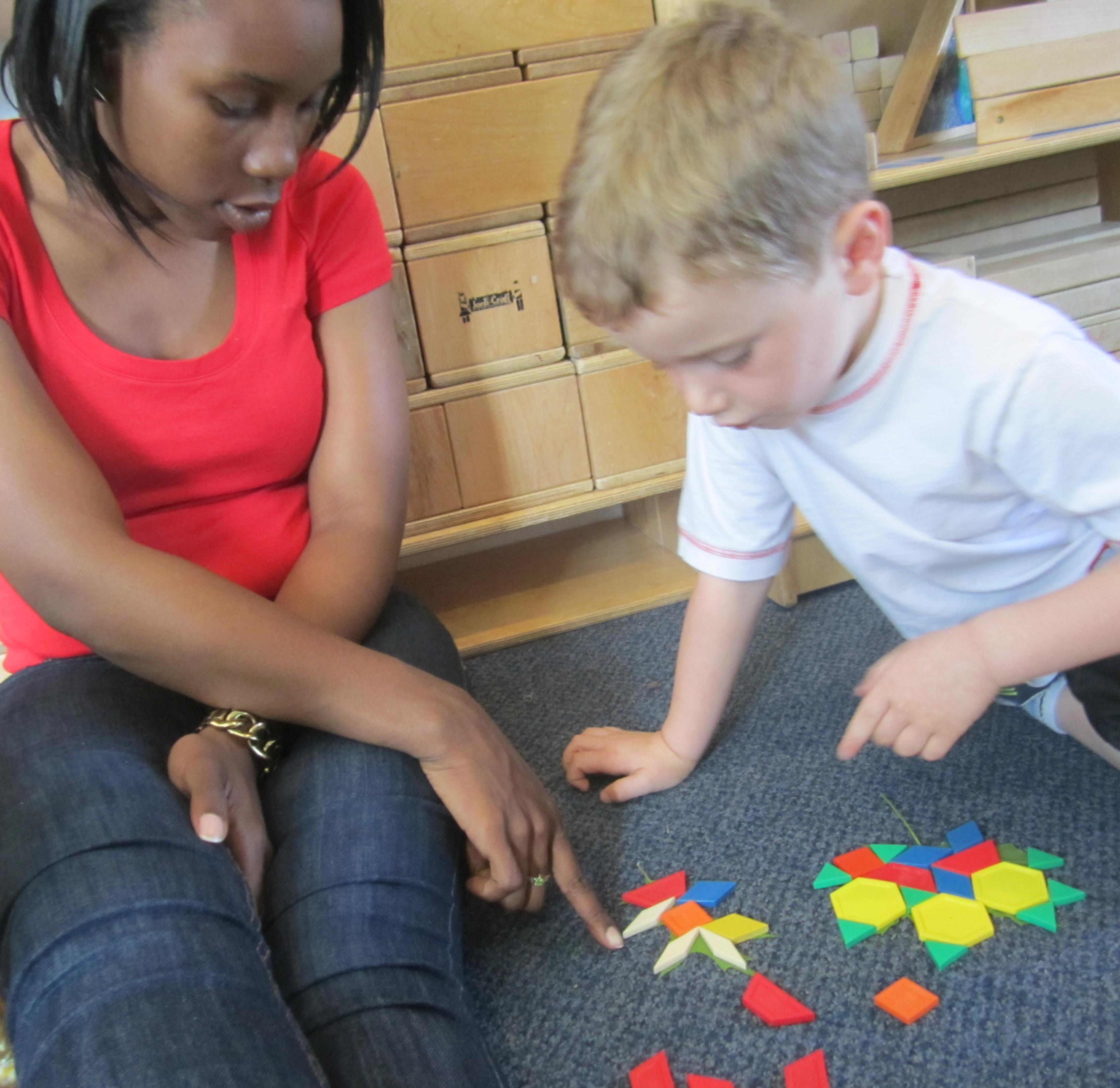
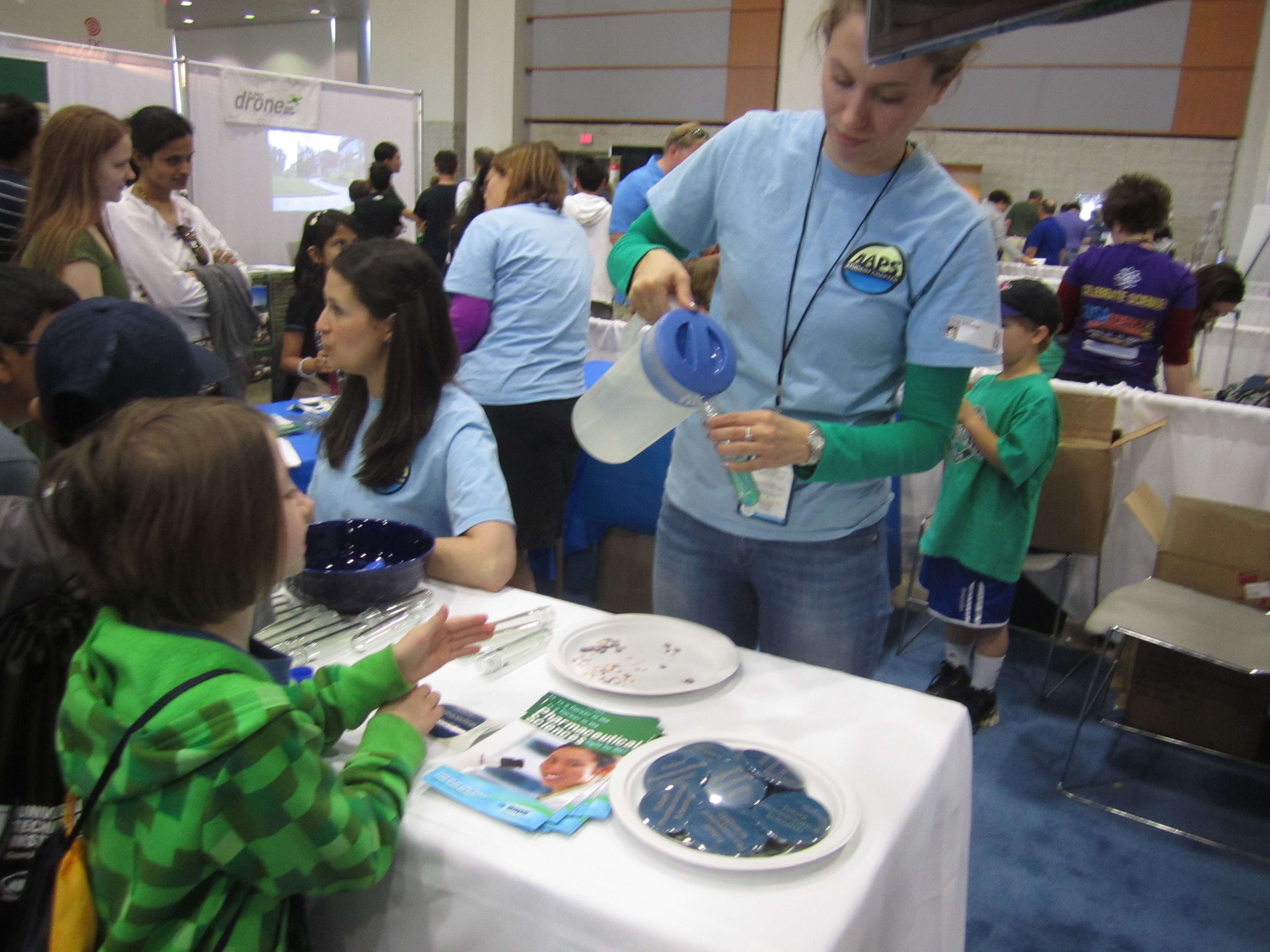
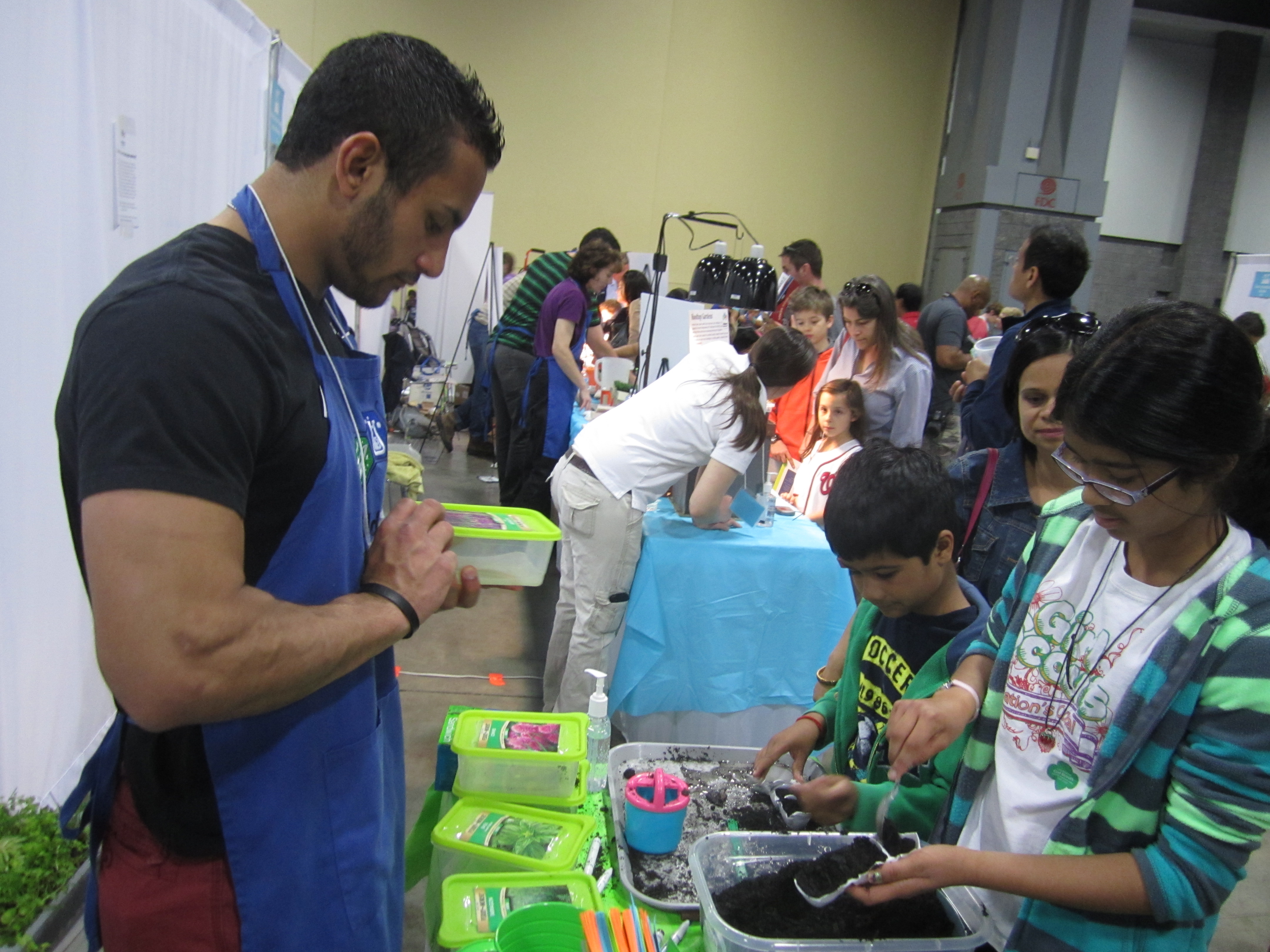
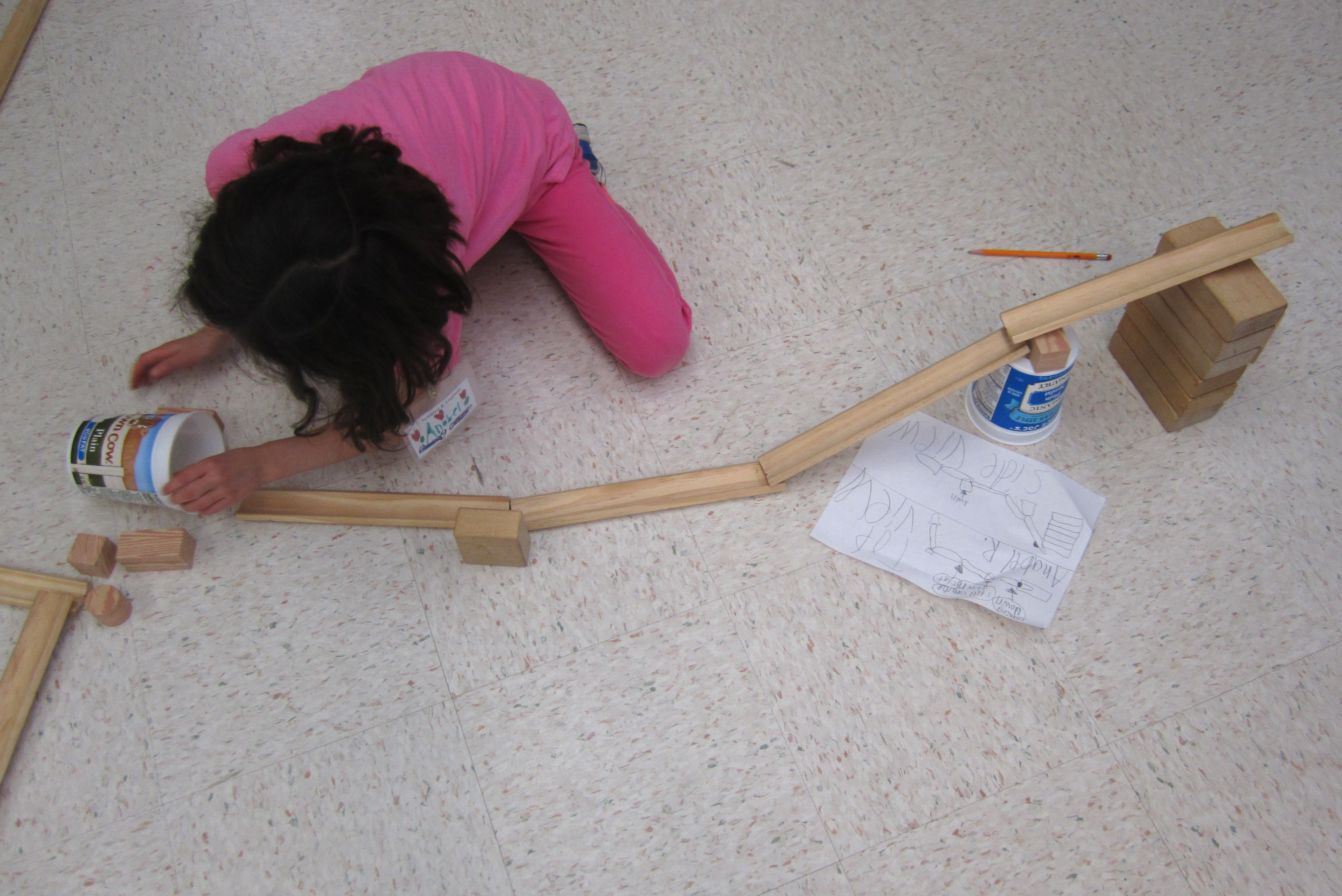
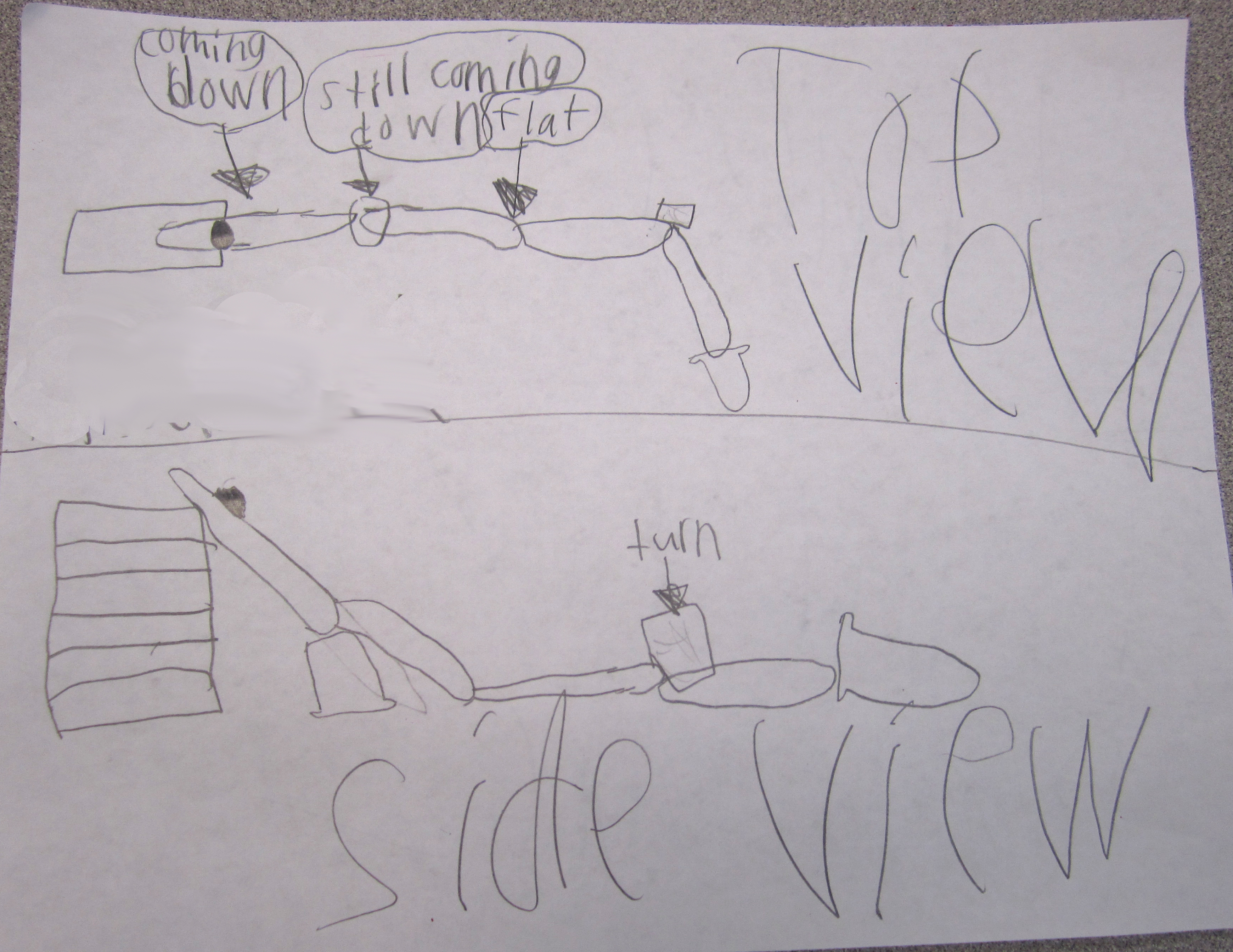
.jpg)